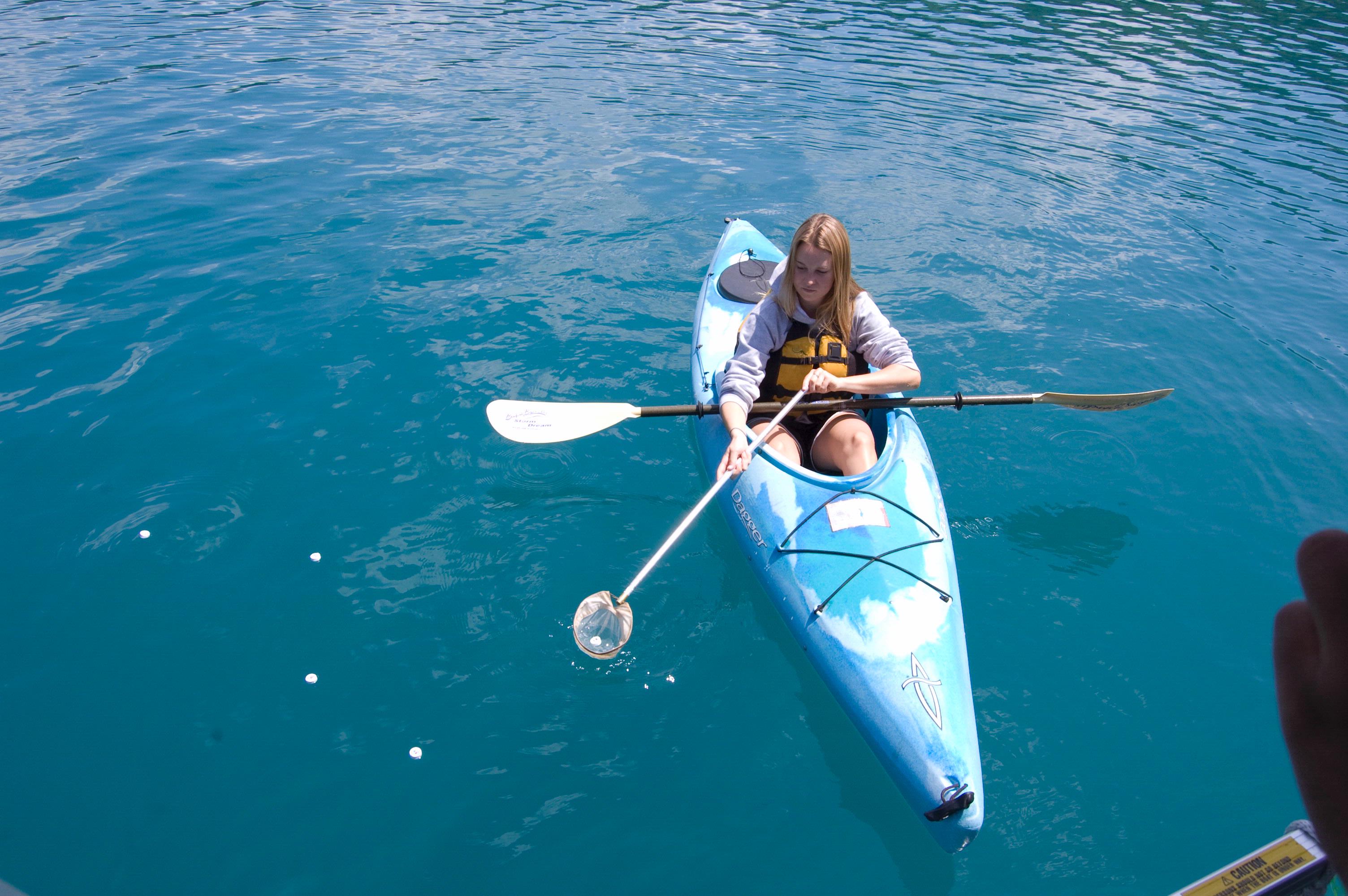
Meromictic lakes are stratified like layers of cake. They are interesting biological case studies because their surface and bottom waters never mix, and their sediments often date back thousands of years. One example of a meromictic lake is Green Lake located in a New York State Park just east of Syracuse. It was the first lake in North America to be classified as such, and scientists began recording data on it as early as 1839. Sean Linehan ’10 and Elizabeth Pendery ’10 are studying the biological diversity of Green Lake this summer with Associate Professor of Biology Michael McCormick.
Green Lake was most likely scoured out by glaciers, says McCormick. This is the reason for its extreme depth relative to its surface area. Within its waters, there are several sections with different biological characteristics. The upper portion, called mixolimnion, is oxygenated; the bottom layer, called monimolimnion, is euxinic – that is, it contains very high levels of sulfide and little to no oxygen. The two sections are separated by a chemocline, or an area where the chemical composition changes dramatically. Here one finds a dense layer of purple sulfur bacteria which makes the water appear pink. McCormick says the simple lack of oxygen below the chemocline plays a big role in what species live there and how they have adapted to their strange environment.
McCormick says that the lake is not home to many fish because of the toxicity of the sulfide. Any bacteria that happen to flourish in the bottom of the lake must continually oxidize sulfur. McCormick was quite frank in saying that “if you went swimming down there, you’d be in big trouble.”
In order to assess the diversity of species in this bottom layer, the research team relied on many hours of concentration and efficiency aboard Hamilton’s RV Continental Drifter. Each syringe that was sent down into the water was securely fastened to a long watering hose and needed to descend at an angle exactly perpendicular to the water’s surface so as to ensure proper depth readings. A bothersome breeze that day caused the boat to drift, so someone had to make steer it back into place. After meticulously timing the entire process, the students gathered around to watch McCormick send a weigh messenger down through the hose that would break off the tips of the syringes and allow them to recover their samples.
In the lab, the students will analyze the genetic makeup of the lake by slicing a portion of their ribosomal DNA in a procedure called denaturing gradient gel electrophoresis (DGGE). The “bands” along the gel will represent variations in the microbial community. They will also study their measurements of the pH and temperature of the water, how salty it is, how conductive it is to electricity, and the amount of oxygen dissolved in the water. Using this information, they will create a phylogenic map, or an evolutionary tree that shows the relationship between organisms believed to have a common ancestor. This could help them discover the nearest cousin to any obscure organisms living in the depths of Green Lake.
“We’re going to try to get an idea of who they are and what they are and correlate that with the chemistry of the lake,” McCormick said. Their results will give them a better understanding of complex ecology and the function of archaea and bacteria in extreme environments. But it might also provide clues to the biological mystery of cause and effect.
“There’s kind of a chicken and egg question going on here,” said McCormick. “Which came first?” The microbes require the chemicals to survive and could have necessitated the lake’s chemical formation, but perhaps those conditions were established first.
Regardless, the summer project will be enlightening experience for both students and professor.
McCormick is thankful that the park gave them permission to sail the research vessel. Pendery and Linehan will forward their results to the park when they are finished.
“There’s really no other Adirondack lake like it, so it’s a pretty rare ecosystem to have in our backyard,” McCormick said.
